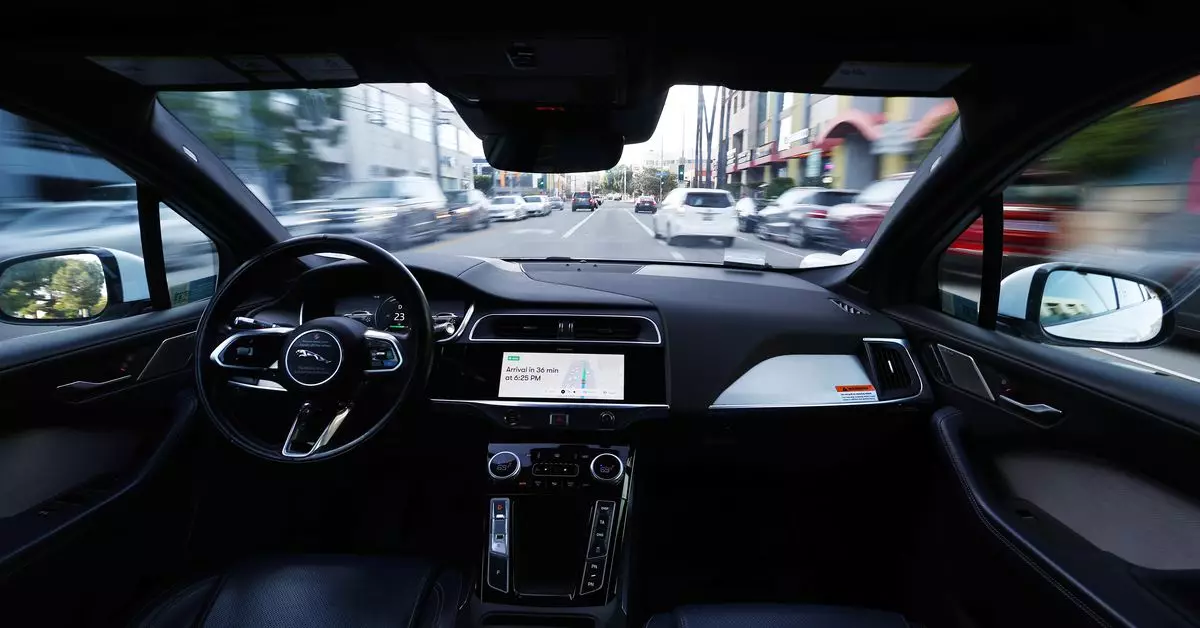Waymo, a front-runner in the autonomous vehicle (AV) sector, has established itself as a formidable player in the ride-hailing industry, achieving significant milestones while its competitors grapple with financial woes and regulatory challenges. The company recently disclosed that it has completed a remarkable 4 million driverless fares in three cities: Phoenix, San Francisco, and Los Angeles. This statistic is particularly striking given the broader context where rivals are either still in the testing phase or have had to halt operations altogether. Remarkably, Waymo’s growth appears largely concentrated in 2024, indicating a rapid maturation of its technologies and services.
Waymo is not solely confined to urban areas—it spans approximately 500 square miles across its primary cities, and it has plans to extend its reach further, with prospective launches in Atlanta and Miami already on the horizon. Additionally, Waymo is set to venture into international markets, recently announcing testing initiatives in Japan. This steady expansion not only underscores Waymo’s commitment to increasing its footprint but also highlights consumer demand for its services.
One of the standout features of Waymo’s operational success is its commitment to sustainability. By transitioning to an all-electric fleet, the company has contributed to the avoidance of over 6 million kilograms of carbon dioxide emissions. This impact is amplified by the cumulative 11 million hours that riders have spent in Waymo’s autonomous vehicles, emphasizing the environmental benefits of utilizing such services over traditional gasoline-powered ride-hailing options.
In an innovative move to engage and retain customers, Waymo has introduced a “Year in Review” feature within its Waymo One app. Similar to Spotify Wrapped, this personalized experience allows users to view their travel statistics, including miles driven and emissions saved. Furthermore, customer preference for specific destinations, such as airports and popular locales, reflects a burgeoning reliance on automated transport for efficiency—particularly for travel to major travel hubs, which have proved to be significant revenue streams.
Despite the optimism surrounding its achievements, Waymo is not without hurdles. The increasing regulatory scrutiny surrounding autonomous vehicles poses an unpredictable threat to its business model. Recent shifts in governmental attitudes toward AV technology—especially under the incoming administration—could lead to more stringent regulations or tariff policies impacting vehicle imports. As Waymo eyes new markets and expands its services, overcoming these legal challenges will be crucial for sustainable growth.
Operational costs present another significant concern for Waymo. The company’s recent financial reports reveal a mixed bag. While its “Other Bets” unit, which includes Waymo, saw revenue increase to $388 million in Q3 2024, it also reported substantial losses of $1.12 billion. As it pivots from a research-focused entity to a consumer-facing service provider, effectively managing and lowering costs has become imperative.
Waymo’s vehicles, equipped with advanced sensors and technology for safe navigation, are currently positioned in the premium ride-hailing segment—specifically akin to Uber Black. However, the high acquisition and operational costs associated with these vehicles mean that the current volume of 175,000 trips per week is insufficient to recuperate expenses. Consequently, a reevaluation of pricing strategy may be necessary as the ride-hailing market grows increasingly competitive.
Safety remains a critical issue for Waymo, despite the company’s assertion that its vehicles are statistically safer than human-operated vehicles. Concerns over vandalism, harassment of autonomous cars, and the occasional conflicts with emergency services highlight the prevailing skepticism surrounding self-driving technology. While Waymo has made strides in ensuring the safety of its passengers, continued transparency about its safety protocols and real-time monitoring may be essential to build public trust.
Customer experiences have generally been positive, with many praising the customization aspects of rides—features that allow them to choose their preferred music and temperature settings. However, to maintain and enhance this user experience, the company must consider expanding its service offerings beyond one airport in Phoenix and increase its capabilities on highways, which remain limited.
In the coming years, Waymo will need to navigate a complex landscape influenced by regulatory environments, operational costs, and consumer perceptions while also retaining its innovative edge. As it continues to enhance its fleet and expand its service offerings, the company has the potential for continued success in the dynamic landscape of autonomous transportation. With strategic planning and an unwavering focus on safety and user engagement, Waymo could emerge stronger and more integrated into the future of urban mobility.

